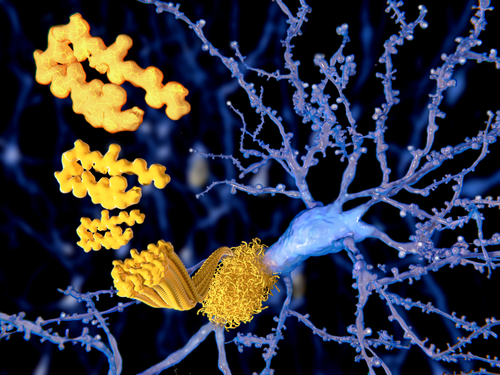Enzyme Linking Fatty Acids to Alpha-synuclein Could Be Parkinson’s Therapeutic Target, Study Suggests

Inhibiting an enzyme that regulates the production of fatty acids may protect against brain toxicity induced by alpha-synuclein in Parkinson’s disease and may become a therapeutic target for these patients, a study reports.
The study, “Lipidomic Analysis of α-Synuclein Neurotoxicity Identifies Stearoyl CoA Desaturase as a Target for Parkinson Treatment,” was published in the journal Molecular Cell.
The brain is rich in lipids, or fats, which are key for neural development and nerve cell communication. Brain cells tightly regulate lipid production and uptake, as well as the distribution of its precursors, such as fatty acids. Imbalance of the brain’s lipids has been implicated in several neurodegenerative diseases, including Parkinson’s.
Alpha-synuclein, the main component of protein clumps known as Lewy bodies, interacts with fatty acids and favors their storage as triglycerides — the most common type of fat in the body — in lipid droplets in cells.
These droplets prevent the toxic effects of lipid accumulation, but may also contribute to the deposition of alpha-synuclein. Proteins related to lipid metabolism have been identified as risk factors for Parkinson’s. However, little is known about the impact of lipid metabolism on alpha-synuclein assembly and cellular alterations.
Researchers first measured lipids and fatty acid alterations in yeast that had been engineered to produce alpha-synuclein. This showed an increase in components of the neutral lipids pathway — storage lipids lacking positively and/or negatively charged groups — including a monounsaturated fatty acid called oleic acid. The team thereby hypothesized that high oleic acid levels promote the binding of alpha-synuclein to the cell membrane, increasing toxicity.
These findings were then replicated in patient cell lines, in a mouse model of familial Parkinson’s, and in a model of dopamine-producing neuron degeneration (a hallmark of Parkinson’s) in the nematode worm Caenorhabditis elegans.
“It was fascinating to see how excess [alpha-synuclein] had such consistent effects on the neutral lipid pathway across model organisms,” Ulf Dettmer, PhD, co-senior author of the study from the Brigham and Women’s Hospital and Harvard Medical School, said in a press release. “All our models clearly pointed at oleic acid as a mediator of [alpha]-synuclein toxicity.”
Researchers investigated possible ways to target fatty acids or the processes leading to their production that could protect against Parkinson’s. They found that triglycerides protect from alpha-synuclein-induced toxicity by preventing the accumulation of oleic acid and diglyceride, a type of fat composed of two fatty acid chains.
Importantly, they found that inhibiting an enzyme known as stearoyl-CoA-desaturase (SCD), which is key in the production of oleic acid, protected against cell toxicity, formation of alpha-synuclein aggregates, and a decrease in the amount of protective alpha-synuclein tetramers (natural structure formed by four subunits) relative to its aggregation-prone monomers, or single-protein chains.
“Our findings thus indicate that partial inhibition of SCD would be a rational therapeutic approach to [alpha-synuclein] neurotoxicity,” the researchers wrote.
“We’ve identified a pathway and a therapeutic target that no one has pursued before,” said Saranna Fanning, PhD, the study’s lead author.
Co-senior author Dennis Selkoe, MD, said the findings present “a unique opportunity for small-molecule therapies to inhibit the enzyme in models of [Parkinson’s] and, ultimately, in human diseases.”






